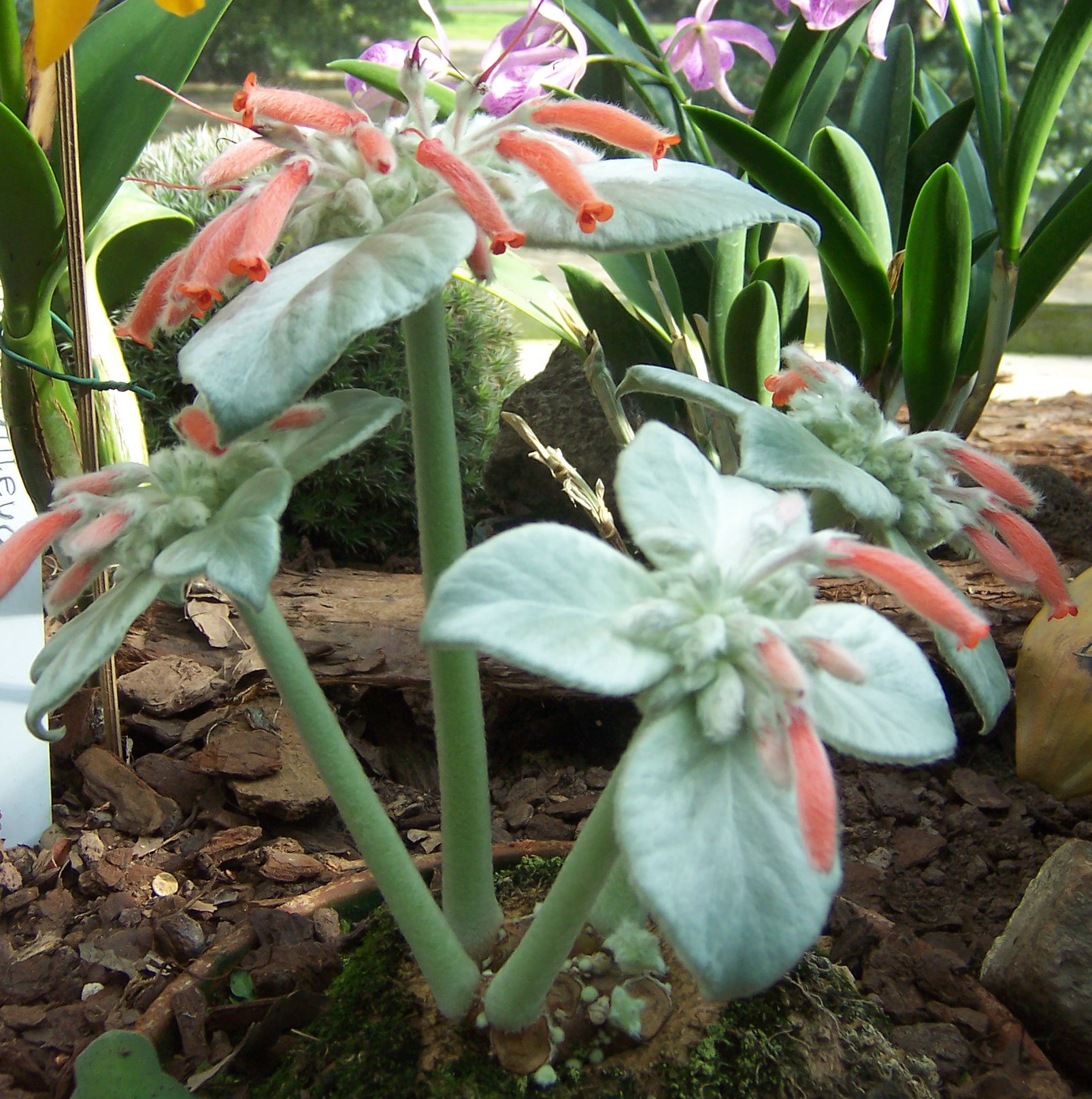- Sinningia
image_width = 204px
image_caption = "Sinningia leucotricha "
regnum =Plantae
divisio = Magnoliophyta
classis =Magnoliopsida
ordo =Lamiales
familia =Gesneriaceae
genus = "Sinningia"
genus_authority = Nees
subdivision_ranks = Species
subdivision = Several, including: "Sinningia brasiliensis " "Sinningia canescens " "Sinningia cooperi " "Sinningia iarae " "Sinningia incarnata " "Sinningia leucotricha " "Sinningia lineata " "Sinningia macropoda " "Sinningia speciosa " "Sinningia tubiflora "
synonyms ="Corytholoma" "Lietzia" "Rechsteineria""Sinningia" is a genus of
flowering plant s in the familyGesneriaceae . There are about 65 species oftuberous perennialherb s, all occurring inCentral America andSouth America , with the greatest concentration of species occurring in southernBrazil .The best-known species, "
Sinningia speciosa ", was originally introduced to cultivation as "Gloxinia speciosa" and is still commonly known to gardeners and in the horticultural trade as "gloxinia". The true genus "Gloxinia" is distinguished by having scalyrhizomes rather than tubers."Sinningia" species often grow on rocks or cliffs and most are pollinated by
hummingbirds orbees but "Sinningia brasiliensis" isbat -pollinated, and "Sinningia tubiflora", with large, powerfully fragrant tubular white flowers, is apparently pollinated bysphinx moth s. Most of the species have large, brightly colored flowers because of this, numerous species and a large number of hybrids and cultivars are cultivated ashouseplants . Some species with particularly large tubers are cultivated bycactus andsucculent enthusiasts ascaudiciforms . One such example is "Sinningia leucotricha ", often listed under the older name "Rechsteineria leucotricha" and dubbed "Brazilian edelweiss" for its covering of silvery, silky hairs. Other species with large tubers are "Sinningia iarae ", "Sinningia lineata ", and "Sinningia macropoda ."The Brazilian genera "
Paliavana " and "Vanhouttea ", consisting of shrubby plants without tubers, are closely related to "Sinningia" and recent morphological and molecular analyses (Boggan 1991, Perret et al. 2003) suggest that these genera are, in fact, nontuberous "Sinningia" species. All three genera were included in tribe Gloxinieae in the classification system ofHans Wiehler but are now recognized in their own tribe, Sinningieae.Numerous genera, including "Corytholoma", "Rechsteineria" and "Lietzia", have been synonymized under "Sinningia".
References
*Boggan, J.K. 1991. 1991. A morphological study and cladistic analysis of "Sinningia" and associated genera with particular reference to "Lembocarpus", "Lietzia", "Paliavana", and "Vanhouttea" (Gesneriaceae: Gloxinieae). Thesis, Cornell University, Ithaca, New York, U.S.A. ix + 179 pages, 21 figures. [Copies available at Cornell University and Smithsonian Institution libraries.]
*Perret, M., A. Chautems, R. Spichiger, G. Kite, & V. Savolainen. 2003. Systematics and evolution of tribe Sinningieae (Gesneriaceae): evidence from phylogenetic analyses of six plastid DNA regions and nuclear ncpGS. "American Journal of Botany" 90(3): 445-460.
*Wiehler, H. 1983. A synopsis of the neotropical Gesneriaceae. "Selbyana" 6: 1-219.
*Wiehler, H. and A. Chautems. 1995. A reduction of "Lietzia" to "Sinningia". Gesneriana 1(1): 5-7.External links
* [http://www.botanik.univie.ac.at/morphology/genera_gesneriaceae/genera/gloxinia.htm "Sinningia"] from [http://www.botanik.univie.ac.at/morphology/genera_gesneriaceae/index.htm The Genera of Gesneriaceae]
* [http://gesneriads.ca/gensinn.htm "Sinningia"] from the [http://gesneriads.ca Gesneriad Reference Web]
* [http://www.aromaticas.es/sinningia-leucotricha/62/ Sinningia leucotricha]
Wikimedia Foundation. 2010.

